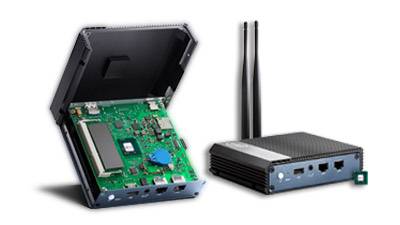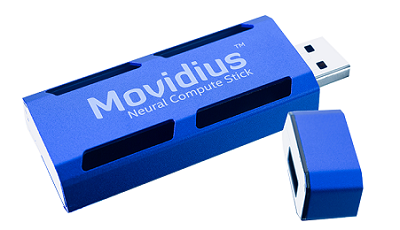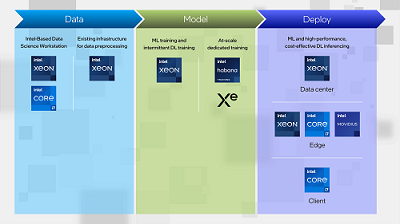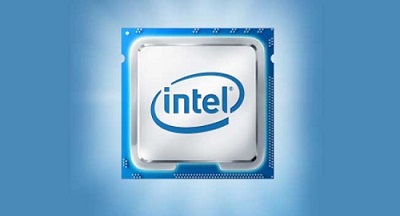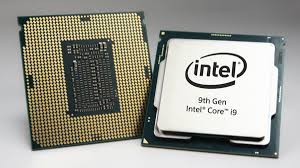 Intel is the world's largest and highest valued semiconductor chip maker, based on revenue. It is the inventor of the x86 series of microprocessors, the processors found in most personal computers. Intel Corporation, founded on July 18, 1968, is a portmanteau of Integrated Electronics (the fact that "intel" is the term for intelligence information was also quite suitable).Intel also makes motherboard chipsets, network interface controllers and integrated circuits, flash memory, graphic chips, embedded processors and other devices related to communications and computing. Founded by semiconductor pioneers Robert Noyce and Gordon Moore and widely associated with the executive leadership and vision of Andrew Grove, Intel combines advanced chip design capability with a leading-edge manufacturing capability. Intel is the world's largest and highest valued semiconductor chip maker, based on revenue. It is the inventor of the x86 series of microprocessors, the processors found in most personal computers. Intel Corporation, founded on July 18, 1968, is a portmanteau of Integrated Electronics (the fact that "intel" is the term for intelligence information was also quite suitable).Intel also makes motherboard chipsets, network interface controllers and integrated circuits, flash memory, graphic chips, embedded processors and other devices related to communications and computing. Founded by semiconductor pioneers Robert Noyce and Gordon Moore and widely associated with the executive leadership and vision of Andrew Grove, Intel combines advanced chip design capability with a leading-edge manufacturing capability.
Intel was an early developer of SRAM and DRAM memory chips, which represented the majority of its business until 1981. Although Intel created the world's first commercial microprocessor chip in 1971, it was not until the success of the personal computer (PC) that this became its primary business. During the 1990s, Intel invested heavily in new microprocessor designs fostering the rapid growth of the computer industry. During this period Intel became the dominant supplier of microprocessors for PCs, and was known for aggressive and sometimes illegal tactics in defense of its market position, particularly against Advanced Micro Devices (AMD), as well as a struggle with Microsoft for control over the direction of the PC industry.
Products: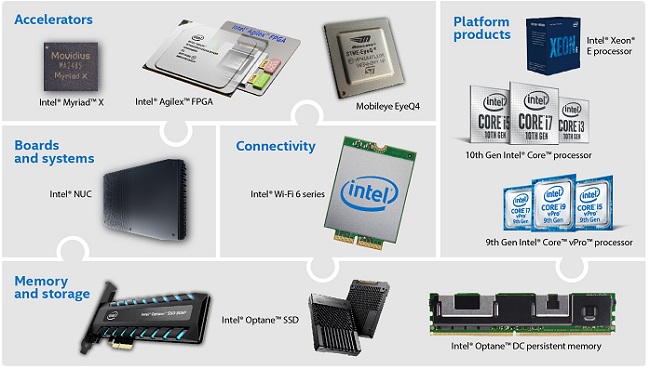 Intel Corporation is engaged in designing and manufacturing products and technologies. The Company's segments include Client Computing Group (CCG), Data Center and AI (DCAI), Network and Edge (NEX), Mobileye, Accelerated Computing Systems and Graphics (AXG), and Intel Foundry Services (IFS). The CCG segment is focused on long-term operating system, system architecture, hardware, and application integration that enable PC experiences. Its DCAI segment offers workload-optimized solutions to cloud service providers and enterprise customers, along with silicon devices for communications service providers. Its NEX segment helps networks and edge compute systems from inflexible fixed-function hardware to general-purpose compute, acceleration, and networking devices running cloud-native software on programmable hardware. The Mobileye segment provides driving assistance and self-driving solutions. AXG segment delivers products and technologies to its customers to solve computational problems. Intel Corporation is engaged in designing and manufacturing products and technologies. The Company's segments include Client Computing Group (CCG), Data Center and AI (DCAI), Network and Edge (NEX), Mobileye, Accelerated Computing Systems and Graphics (AXG), and Intel Foundry Services (IFS). The CCG segment is focused on long-term operating system, system architecture, hardware, and application integration that enable PC experiences. Its DCAI segment offers workload-optimized solutions to cloud service providers and enterprise customers, along with silicon devices for communications service providers. Its NEX segment helps networks and edge compute systems from inflexible fixed-function hardware to general-purpose compute, acceleration, and networking devices running cloud-native software on programmable hardware. The Mobileye segment provides driving assistance and self-driving solutions. AXG segment delivers products and technologies to its customers to solve computational problems.
|
|
Laptop
Intel® Graphics Technology
Intel® Centrino® processor technology
Intel® Centrino® with vPro™ technology
Processors
Chipsets
Wireless adapters
Internet Devices
Solid-State Drives (SSD)
Motherboards
Intel® Desktop boards
Server boards
Workstation boards
Processors
Desktop
Laptop
Server
Workstation
Internet Devices
Embedded and communications
Server
Processors
Chipsets
Systems
Boards
Adapters
Chassis
RAID controllers
Intel® Storage Systems
Solid-State Drives (SSD)
Software products
Intel® Software Products
Intel® Expressway Service Gateway
Storage and I/O
SAS controllers
Solid-State Drives (SSD)
Technical books
Programming
Computer system design
Network infrastructure design
Strategic technologies
IT best practices
Wireless products
Intel® Wi-Fi Products
Business-class Wi-Fi
Why Intel® Wireless
Intel® Mobile Communications Products
Intel® Wireless Display
Workstation
Processors
Chipsets
Boards
Solid-State Drives (SSD)
Cable Modems
Products by technology: cable modems, set-top-box (STB), and video gateway solutions
Cable modems, STB, and video gateway solutions: DOCSIS* 2.0 data modem solutions
DOCSIS* 2.0 data modem solutions TNETC430436
DOCSIS* 2.0 data modem solutions TNETC46004602
DOCSIS* 2.0 voice and data gateway modem solutions TNETC540
Chipsets
Desktop
Laptop
Server
Workstation
Embedded
Consumer electronics
Consumer electronics
Media processing components
Demodulators and tuners
Widget Channel
Smart TV
Desktop
Intel® Graphics Technology
Intel® vPro™ technology
Processors
Boards
Chipsets
Adapters
Solid-State Drives (SSD)
Embedded and communications
Processors
Chipsets
Wireless adapters
Intel® Desktop Adapters
Gigabit server adapters
10 Gigabit server adapters
Intel® Ethernet controllers
Microcontrollers
Ethernet
Intel® Ethernet
Intel Ethernet Controllers
Gigabit Ethernet
10 Gigabit Ethernet
Health
Healthcare technologies and products
Internet Devices
Processors
Chipsets
|
Technology:
Intel® Gateway solutions for the internet of things
Speed innovation for new devices and maintain interoperability with legacy systems. Intelligent gateways perform a vital role in the Internet of Things.
Intel Movidius Neural Compute Stick
Myriad 2 Vision Processing Unit (VPU), AI-optimized processor for accelerating vision computing on convolutional neural networks (CNN). Ideal for the demanding mix of vision-centric tasks in modern smart devices.
Edge AI: powerful hardware, real-time decision making
Edge computing is advancing artificial intelligence by addressing the challenges of cloud latency, cost and complexity. Edge AI delivers new capabilities, efficiencies and value to a wide range of industries including industrial and transportation.
Processors
Intel designs advanced, high-performance processors for every usage, including enterprise-scale servers, IoT devices, laptops, desktops, workstations, and mobile devices. Find the technology you need here.
|
Intel 4th Generation Processors
Intel's 4th generation Core Processor family delivers Desktop, Mobile, and Embedded products with maximum performance per watt. Intel Haswell Architecture is based on a 22nm process and utilizes FinFET technology for reduced leakage and lowered power consumption. Idle state power consumption has been lowered, creating a 20x improvement from the previous generation, with a 3 second wakeup time possible using Intel Rapid Start. Intel Wireless Display is available to stream content from portable products to a compatible HDTV. Processors are available as low as 35W Thermal Design Power for embedded applications. Desktop performance processors are available with a clock speed up to 3.9GHz when utilizing Intel Turbo mode. Sockets supported are LGA 2001 for desktop and rPGA947 & BGA1364 for mobile. Haswell New Instructions include Advanced Vector Extensions 2, gather, BMI1, BMI2, and FMA3 support.
|
|
|
Specifications:
|
|
 Intel Corporation (NASDAQ: INTC) is an American multinational semiconductor chip maker corporation headquartered in Santa Clara, California, United States. You know Intel is processors. But Intel do so much more. Intel also offers FPGAs, SoCs, CPLDs, and complementary technologies, such as power solutions, to provide high value solutions to customers worldwide. Intel innovates at the boundaries of technology to make amazing experiences possible for business and society, and for every person on Earth. Throughout their proud history, Intel has continuously expanded the reach, influence and power of computing to improve people’s everyday lives. With more than 100,000 employees in 63 countries and customers in over 120 countries, Intel’s products and services create the foundation for limitless invention. Intel has transformed from a company that primarily served the PC industry, to one now also powering the majority of the world’s data centers, connecting hundreds of millions of mobile and Internet of Things devices, and helping to secure and protect enterprise and government IT systems. Intel's manufacturing advantage - fueled by their pursuit of Moore’s Law - lets Intel continuously pushes the limits of performance and functionality and expand what experiences can be made possible.
Intel Corporation (NASDAQ: INTC) is an American multinational semiconductor chip maker corporation headquartered in Santa Clara, California, United States. You know Intel is processors. But Intel do so much more. Intel also offers FPGAs, SoCs, CPLDs, and complementary technologies, such as power solutions, to provide high value solutions to customers worldwide. Intel innovates at the boundaries of technology to make amazing experiences possible for business and society, and for every person on Earth. Throughout their proud history, Intel has continuously expanded the reach, influence and power of computing to improve people’s everyday lives. With more than 100,000 employees in 63 countries and customers in over 120 countries, Intel’s products and services create the foundation for limitless invention. Intel has transformed from a company that primarily served the PC industry, to one now also powering the majority of the world’s data centers, connecting hundreds of millions of mobile and Internet of Things devices, and helping to secure and protect enterprise and government IT systems. Intel's manufacturing advantage - fueled by their pursuit of Moore’s Law - lets Intel continuously pushes the limits of performance and functionality and expand what experiences can be made possible.  Intel is the world's largest and highest valued semiconductor chip maker, based on revenue. It is the inventor of the x86 series of microprocessors, the processors found in most personal computers. Intel Corporation, founded on July 18, 1968, is a portmanteau of Integrated Electronics (the fact that "intel" is the term for intelligence information was also quite suitable).Intel also makes motherboard chipsets, network interface controllers and integrated circuits, flash memory, graphic chips, embedded processors and other devices related to communications and computing. Founded by semiconductor pioneers Robert Noyce and Gordon Moore and widely associated with the executive leadership and vision of Andrew Grove, Intel combines advanced chip design capability with a leading-edge manufacturing capability.
Intel is the world's largest and highest valued semiconductor chip maker, based on revenue. It is the inventor of the x86 series of microprocessors, the processors found in most personal computers. Intel Corporation, founded on July 18, 1968, is a portmanteau of Integrated Electronics (the fact that "intel" is the term for intelligence information was also quite suitable).Intel also makes motherboard chipsets, network interface controllers and integrated circuits, flash memory, graphic chips, embedded processors and other devices related to communications and computing. Founded by semiconductor pioneers Robert Noyce and Gordon Moore and widely associated with the executive leadership and vision of Andrew Grove, Intel combines advanced chip design capability with a leading-edge manufacturing capability.  Intel Corporation is engaged in designing and manufacturing products and technologies. The Company's segments include Client Computing Group (CCG), Data Center and AI (DCAI), Network and Edge (NEX), Mobileye, Accelerated Computing Systems and Graphics (AXG), and Intel Foundry Services (IFS). The CCG segment is focused on long-term operating system, system architecture, hardware, and application integration that enable PC experiences. Its DCAI segment offers workload-optimized solutions to cloud service providers and enterprise customers, along with silicon devices for communications service providers. Its NEX segment helps networks and edge compute systems from inflexible fixed-function hardware to general-purpose compute, acceleration, and networking devices running cloud-native software on programmable hardware. The Mobileye segment provides driving assistance and self-driving solutions. AXG segment delivers products and technologies to its customers to solve computational problems.
Intel Corporation is engaged in designing and manufacturing products and technologies. The Company's segments include Client Computing Group (CCG), Data Center and AI (DCAI), Network and Edge (NEX), Mobileye, Accelerated Computing Systems and Graphics (AXG), and Intel Foundry Services (IFS). The CCG segment is focused on long-term operating system, system architecture, hardware, and application integration that enable PC experiences. Its DCAI segment offers workload-optimized solutions to cloud service providers and enterprise customers, along with silicon devices for communications service providers. Its NEX segment helps networks and edge compute systems from inflexible fixed-function hardware to general-purpose compute, acceleration, and networking devices running cloud-native software on programmable hardware. The Mobileye segment provides driving assistance and self-driving solutions. AXG segment delivers products and technologies to its customers to solve computational problems.
